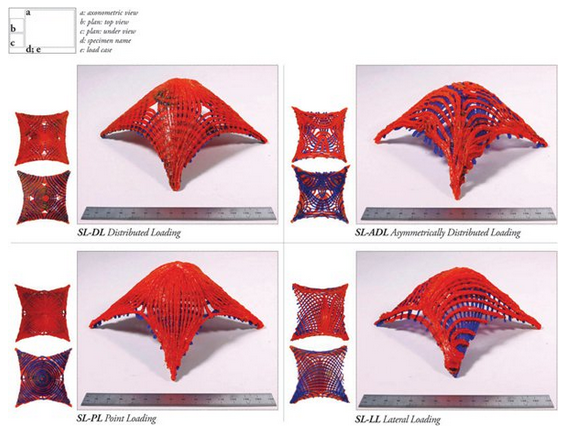
Recently, two researchers at the Massachusetts Institute of Technology (MIT) School of Architecture and Planning proposed a new architectural 3D printing concept , Stress Line Additive Manufacturing ( SLA M), which aims to build free-form buildings in real time. The study has been published in the journal 3D Printing and Additive Manufacturing.
In view of the structural stress caused by the layer-by-layer deposition of materials, SLAM challenges the typical FDM construction method, which produces a grid structure that looks like a dome. The strength of these structures comes from the grid-like arrangement of curves. In the construction industry, since the beginning of the 19th century, the grille was used to make exterior walls and ceilings.

To better understand how 3D printed materials respond to stress, the researchers designed four different grid shapes to determine how the pitch and orientation of the curves affect the weight support. To do this, they used a KUKA robotic arm to print each shape in 3D on a curved wooden surface. Mechanical testing has shown that the grille shape is a viable structure that can support the weight independently.
Next, the researchers will further apply this architectural theory to the design and create solid-filled objects. They also want to integrate sensors into the system to allow the robot arm to intelligently adapt to the design while printing.

In the end, the researchers wanted to eliminate the need for support when using robotic arms for 3D printing, and to create a form-free and flexible structure with SLAM.
WUYI YINGYUAN IMP&EXP CO; LTD. , https://www.yingyuandrinkware.com